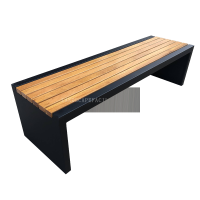Welcome to the website for landscape facilities products and knowledge.
What are the most common use-case scenarios in commercial versus residential settings?
In today's diverse property landscape, understanding the distinct use-case scenarios between commercial and residential settings is crucial for investors, developers, and occupants alike. Commercial properties typically serve business-oriented purposes with specific functional requirements, while residential spaces focus on living accommodations and lifestyle needs.
Commercial settings commonly feature office buildings where companies conduct daily operations, collaborate in meeting rooms, and host client presentations. Retail establishments represent another primary commercial use, encompassing everything from small storefronts to large shopping malls where merchants display products and engage with customers. Industrial facilities form a third major category, including warehouses for storage and distribution, manufacturing plants for production, and research laboratories for development. Hospitality venues like hotels and conference centers accommodate travelers and business events, while medical offices and healthcare facilities serve patient needs.
Residential environments primarily consist of single-family homes where families establish private living spaces, maintain yards, and create personal sanctuaries. Multifamily buildings such as apartments and condominiums offer shared living arrangements with common amenities like pools, gyms, and communal areas. Senior living communities provide specialized accommodations for elderly residents with appropriate support services. Vacation properties serve as temporary retreats for leisure and relaxation, while mixed-use developments combine residential units with commercial establishments on the same property.
The fundamental distinction lies in their core purposes: commercial spaces prioritize revenue generation and business functionality, often requiring robust infrastructure, accessibility features, and professional maintenance. These environments typically operate during standard business hours and must comply with commercial zoning regulations and building codes. Residential spaces emphasize comfort, privacy, and personal expression, operating around the clock to support daily living routines, family activities, and individual lifestyles. They must adhere to residential building standards and prioritize safety features for continuous occupancy.
Technological implementations also differ significantly between these settings. Commercial properties often incorporate advanced security systems, energy management solutions, and specialized equipment tailored to specific industries. Residential technologies focus on home automation, entertainment systems, and comfort controls that enhance quality of life. Maintenance approaches vary accordingly, with commercial properties requiring professional management services and residential spaces typically handled by homeowners or property managers.
Understanding these use-case scenarios enables better decision-making for property selection, investment strategies, and space optimization. Whether seeking office space for a growing business or a home for a expanding family, recognizing how different environments serve distinct purposes leads to more informed choices and successful outcomes in both commercial and residential contexts.
Related search:

Recommendation
Modern Stainless Steel Begonia Wood Park Chair Outdoor Courtyard Leisure Sun Protection Bench Long Seat